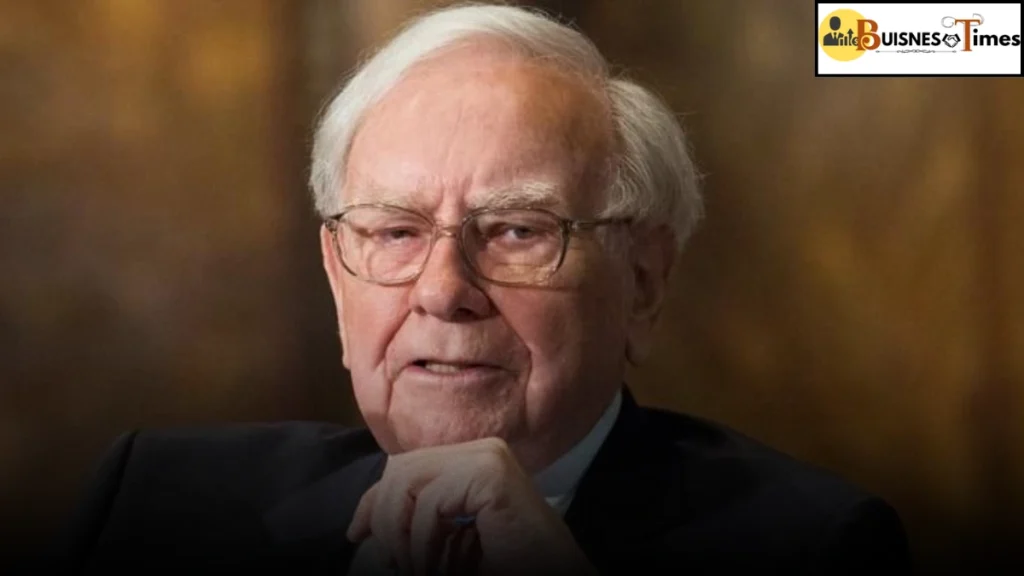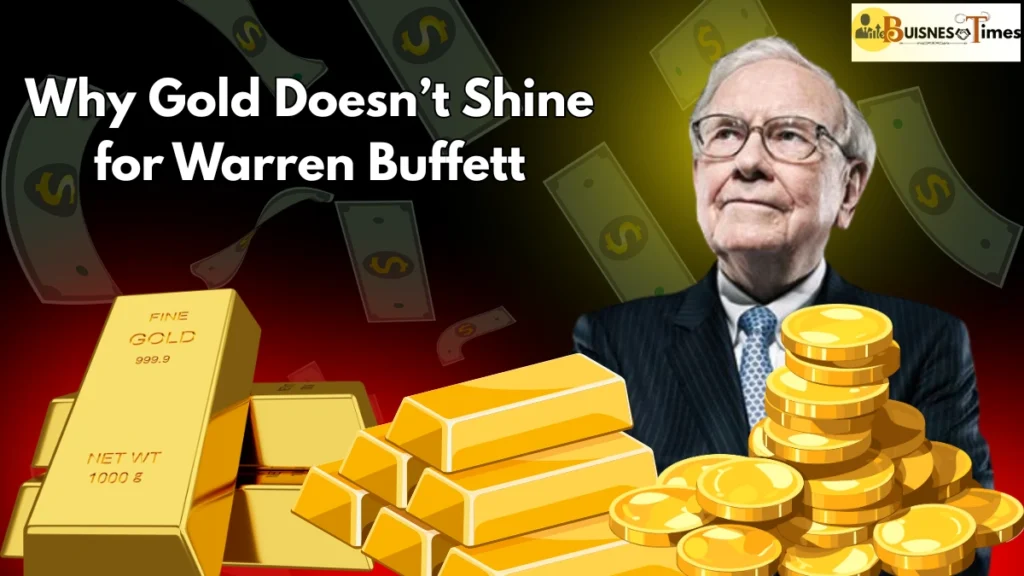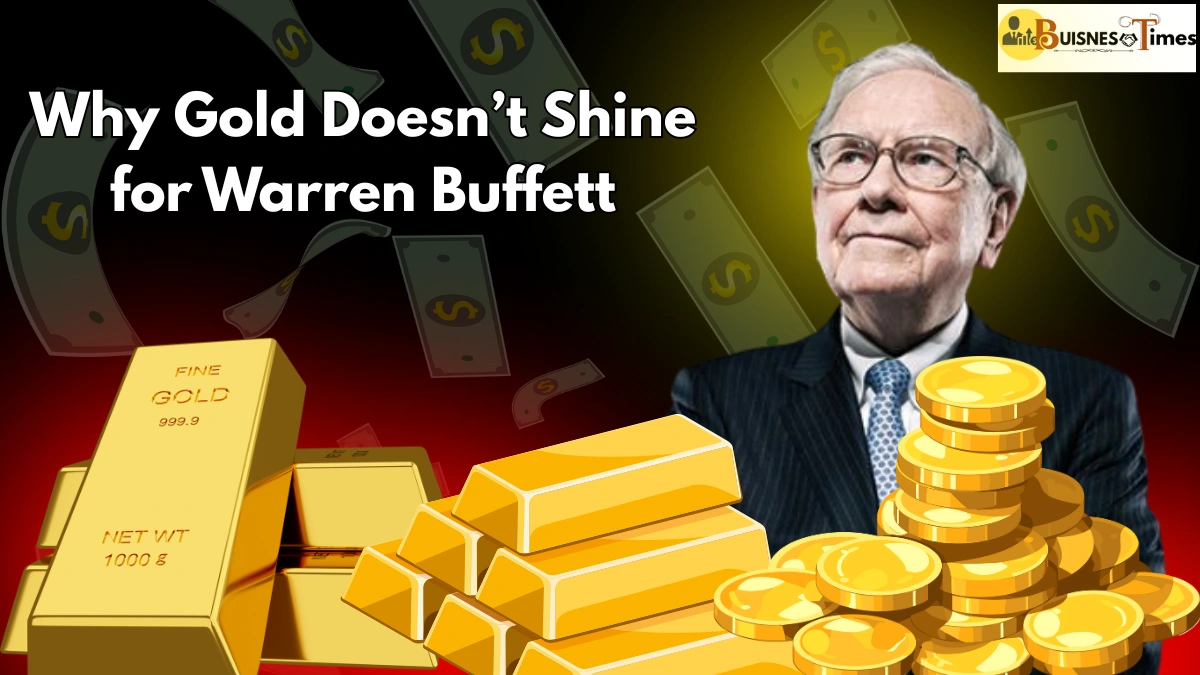
Warren Buffett is one of the most celebrated investors of all time, a man whose financial wisdom has shaped the fortunes of millions. With a personal net worth of around $140 billion (approximately ₹12 lakh crore), he has consistently beaten the markets, built Berkshire Hathaway into a corporate powerhouse, and earned the nickname “The Oracle of Omaha.”
Yet, despite his vast fortune and legendary status, there’s one shiny asset he refuses to touch — gold.
Buffett’s aversion to gold is well known. Over decades of shareholder meetings, interviews, and letters, he has made it clear that gold simply does not fit into his investment philosophy. His reasoning? Gold is what he calls a “non-productive asset” — it doesn’t generate income, create value, or contribute to economic growth.
Warren Buffett’s Lone Foray Into Gold
It’s not that Warren Buffett has never owned anything gold-related. In 2020, Berkshire Hathaway made a surprising investment in Barrick Gold, one of the world’s largest gold mining companies. However, the position raised eyebrows because it seemed out of character. As it turned out, the investment may have been made by one of Warren Buffett’s trusted portfolio managers rather than Warren Buffett himself.
Within six months, the position was sold. True to form, Warren Buffett returned to his golden rule: avoid gold as an investment.
Why Gold Doesn’t Shine for Warren Buffett
Warren Buffett’s dislike for gold boils down to one simple fact: it doesn’t produce anything. In his 2011 letter to shareholders, he explained:

“Gold has two significant shortcomings: it is neither of much use nor procreative.”
Yes, gold can be worn as jewellery and used in some industrial applications, but beyond that, it just sits there. Unlike farmland, factories, or businesses, gold doesn’t generate crops, goods, or profits. If you buy an ounce of gold today and hold it forever, you’ll still have the same ounce of gold — it will not multiply or earn you income.
In one famous example, Warren Buffett compared two hypothetical investments: all the gold in the world versus all the farmland in the United States plus several large companies. The productive assets, he argued, would keep generating value over time, while gold would remain static.
The Numbers Tell the Story

Gold enthusiasts might argue that the precious metal has doubled in price since Warren Buffett made his comments in 2011. Back then, gold traded around $1,750 per ounce. Today, it hovers near $3,350. That’s a big jump — but the numbers need context.
Over the past 14 years, gold’s compound annual growth rate (CAGR) has been roughly 5%. In the same period, U.S. stocks (measured by the S&P 500) have delivered a CAGR of over 14%. In other words, an investor in stocks would have more than tripled their returns compared to someone who put their money in gold.
Buffett’s logic holds: productive assets tend to outperform non-productive ones over the long haul.
The Cyclical Nature of Gold
Part of gold’s allure is its tendency to spike during periods of uncertainty. Between 2011 and 2020, gold prices actually declined, only recovering to their 2011 levels in 2020. It’s in the past five years that gold has surged — rising over 90%.
This volatility is exactly why Warren Buffett avoids it. He has often remarked that gold’s price is driven largely by fear, not by any intrinsic ability to generate wealth.
As he famously said in 2009, when gold was $1,000 an ounce:
“It won’t do anything except look at you.”
And indeed, after peaking at $1,800 in 2011, gold fell back to $1,000 by 2014, leaving many investors with years of dead money.
Gold and the Fear Factor
Buffett’s broader investment philosophy — “Be fearful when others are greedy and greedy when others are fearful” — also applies to gold. He believes gold buying is often motivated by fear, whether it’s fear of inflation, currency collapse, or geopolitical instability.
Recent events have fed that fear:
- US debt concerns: With U.S. government debt reaching $36.93 trillion and over $1 trillion already paid in interest in 2025, fears about fiscal stability are growing.
- Credit rating downgrade: Moody’s recently downgraded U.S. government credit due to rising debt and interest costs.
- Dollar weakness: The U.S. dollar index has fallen nearly 4% in 2025, making gold more attractive to international investors.
These factors have supported gold prices, but Buffett remains unconvinced. For him, these are temporary emotional triggers, not a basis for long-term wealth building.
Warren Buffett’s Vindication
If gold has doubled in price, why does Buffett still look right? The answer lies in opportunity cost. While gold rose modestly over more than a decade, stocks have delivered far superior returns. Buffett’s own Berkshire Hathaway stock has grown even faster, compounding investor wealth at a rate gold simply cannot match.
His view: gold can act as a store of value during crises, but over time, productive assets will leave it in the dust.
Should You Avoid Gold Too?
Buffett’s personal choice to avoid gold doesn’t mean you should never own it. Financial planners often recommend holding a small percentage of gold — typically no more than 10% of your portfolio — as a hedge against uncertainty.
Gold’s real value for individual investors is its ability to diversify a portfolio. When markets fall or currencies weaken, gold often moves in the opposite direction, helping to cushion losses.
The key is moderation. Gold should be part of a broader investment strategy, not the centrepiece.
The Takeaway
Warren Buffett’s stance on gold is consistent with his overall investment philosophy: buy assets that produce value, hold them for the long term, and avoid speculative bets. Gold, in his view, doesn’t meet that standard.
Yet for ordinary investors, gold can still serve a purpose — not as a path to riches, but as a form of insurance. When fear grips the market, that small gold allocation can provide peace of mind.
Today’s prices: Gold trades near $3,400 in global markets, while in India, it’s about ₹1,01,920 per 10 grams. Whether it’s worth owning now depends on your risk tolerance and portfolio goals.
Buffett may never own gold, but for many investors, a little shine in the portfolio isn’t such a bad thing — as long as you remember that it’s the crops in the field, not the metal in the vault, that truly grow wealth.

